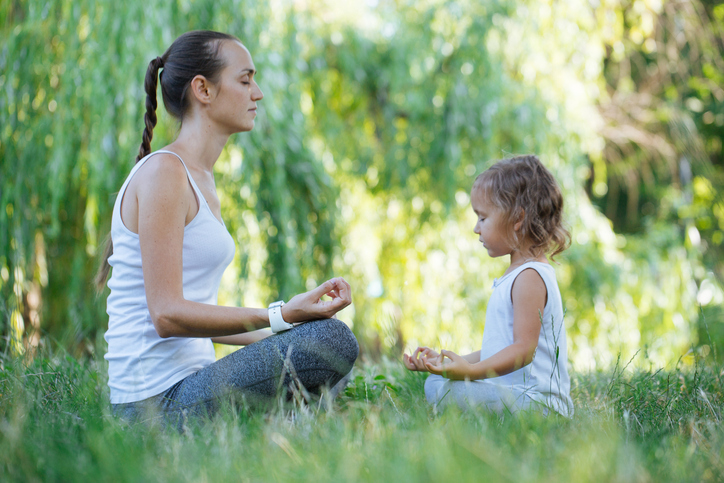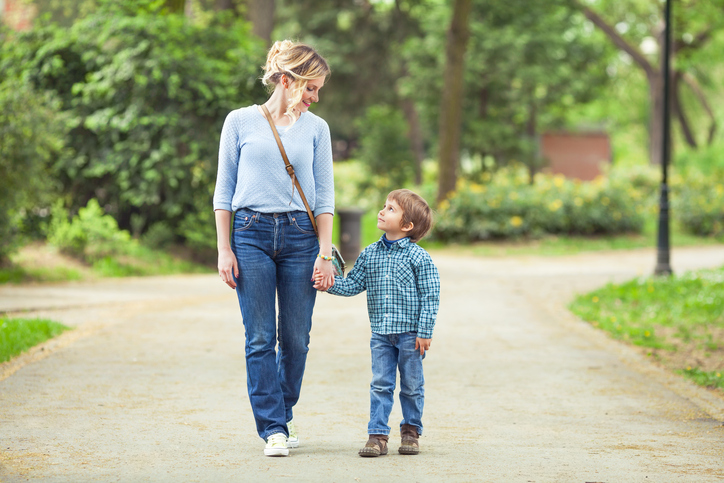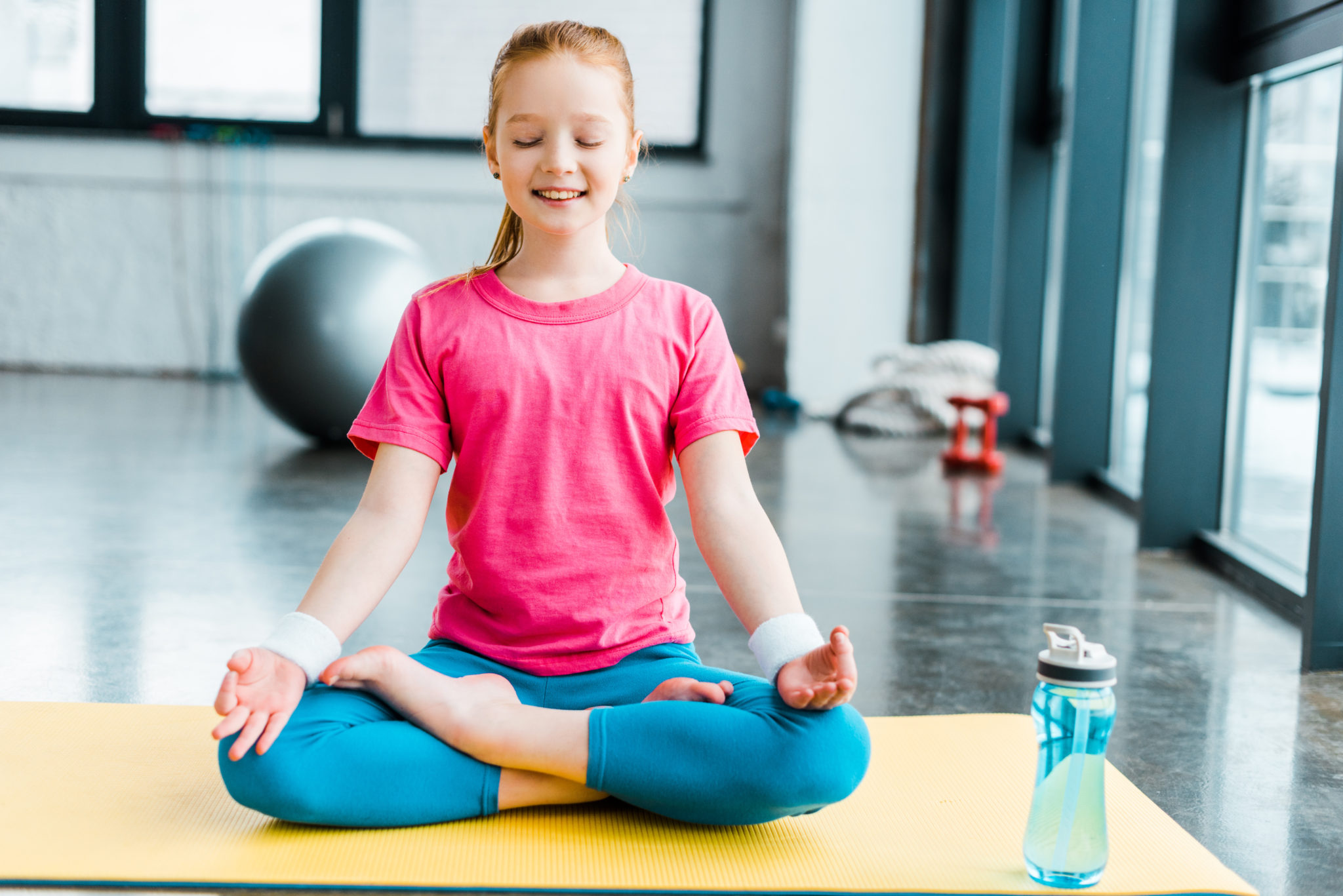Learning mindfulness practices can have a significant long-term affect on a child’s development.
Mindfulness can improve focus and attention. It also helps kids learn to calm themselves down when they’re upset.
Mindfulness may also increase compassion and empathy for others, which in turn helps children resolve conflicts.
These are just a few of the amazing benefits of teaching mindfulness to children. Plus, did we mention that mindfulness exercises for kids can be both easy and fun?
With such a big upside, why wouldn’t you give it a try?
Mindfulness helps kids cope with stress, and feel more gratitude in their lives. It’s really a wonderful thing we as parents can teach our little ones.
We’ll show you how to bring some calm into the chaos. Here’s Six Simple Mindfulness Exercises For Kids to help get you started.
Mix and match whichever ones you think will work best for your children, depending on their age and level of interest.
Then remember to breathe and have fun!

Mindfulness Exercises For Kids
1. Breathing Buddies
This is one of the classic mindfulness exercises for kids.
Paying “attention to the breath” is at the core of most meditation practices, but it can be a tough idea for young children to grasp. A breathing buddy can simplify the concept.
Have each child lie down and place a stuffed animal on their belly. Then have them breathe in and out, watching their breathing buddy rise and fall.
In this way kids are able to tune in to their own breath. They’re training the attentional circuitry in their body and grasping one of the fundamental lessons of mindfulness.
2. Squeeze And Release
This is another attention-building exercise you can have the kids try.
Ask them to lie down. Then have them systematically squeeze every muscle in their bodies as tightly as they can, and then release.
Start at their feet, have them tighten their feet and toes and then…relax. Then their legs, then on to their hips, stomach, arms, etc.
This exercise helps kids recognize when they are holding stress in their body versus letting it go. It’s an elementary way of teaching mindfulness to children.
It shows kids how to tune into their bodies and be present.
RELATED: How Meditation Can Help Make You A Better Parent
3. Practice Gratitude
Feeling grateful for what you have and learning to appreciate the little things that happen in your everyday life is a core component of mindfulness. Make this a regular practice in your family.
Set aside a time every day, or once a week even, where you all share one thing in your life that you are thankful for.
You may find over time that this becomes a favorite family activity.
Gratitude can spark a positive spiral that leads to kindness, optimism, and happiness. People who maintain a regular gratitude practice report higher levels of emotional well-being.
What a great thing to share with your kids!
4. Walk Mindfully
Teaching mindfulness to children doesn’t have to be complicated. It can be as easy as going for a walk.
This simple mindfulness activity has the added bonus of providing your kids a little physical activity and fresh air!
Next time you take a stroll through your neighborhood, make it a “notice walk”.
Have your kids be really quiet and tell them to pay attention to all the sounds they can hear. Then have them pay attention to the smells, then the colors.
After a few minutes of quiet observation, ask them to share what they noticed.
Your kids will start paying more attention to the world around them and notice the beauty in their own backyard.

5. Mindful Eating
Learning to savor and enjoy all the flavors of your food is an important practice for adults and kids alike. Mindful eating can teach kids to notice what different foods taste like, and it may make them less of a picky eater.
It also allows them to eat more slowly, so they can recognize satiety cues and be less prone to overeating.
Mindful eating is really easy to do. Have your children place different foods in their mouths, like a grape, piece of chocolate, or a salty crispy pretzel.
Ask them to eat the food slowly and notice the texture, the temperature, the taste (is it sweet? salty? bitter?) of each food item.
Ask them to notice how it feels when they swish it around their mouth, when they bite into it and when they chew.
You can find a script for a seven-minute mindful eating exercise for children here.
6. Heart Moments
When teaching mindfulness to children in this exercise the “heart” is figurative, what we are really getting at is emotions.
Heart moments can be summed up as let’s talk about feelings. This exercise is a way for kids to stop, observe where they are in the moment, and talk about their feelings without becoming attached to them.
To start, ask your child: “What are you feeling at this moment? How do you know you are feeling those feelings? Where do you feel it in your body?”
This helps kids with self management training. Learning to identify and discuss feelings without acting out on them is an important part of developing impulse control.
Children don’t have to be scared of their feelings, or try and hide them.
The point of the exercise is to help kids see that feelings just happen.
While we can’t stop feelings, we can change how we react to them. An important lesson!
At the end of the day, you want to make these mindfulness exercises for kids fun and easy. This shouldn’t be a “chore” that gets added to their to-do lists.
The idea is to give your children some tools they can use to help focus, manage emotions, and be present.
If a particular exercise isn’t catching your child’s interest, then drop it and try something else.
You can’t force mindfulness, this goes for kids and adults alike.
You have to figure out what techniques work for the individual. Discovery is part of the process.
RELATED: Fun Books That Encourage A Growth Mindset For Kids
SHARE these mindfulness exercises for kids with friends on Facebook and Pinterest by clicking the buttons below.












